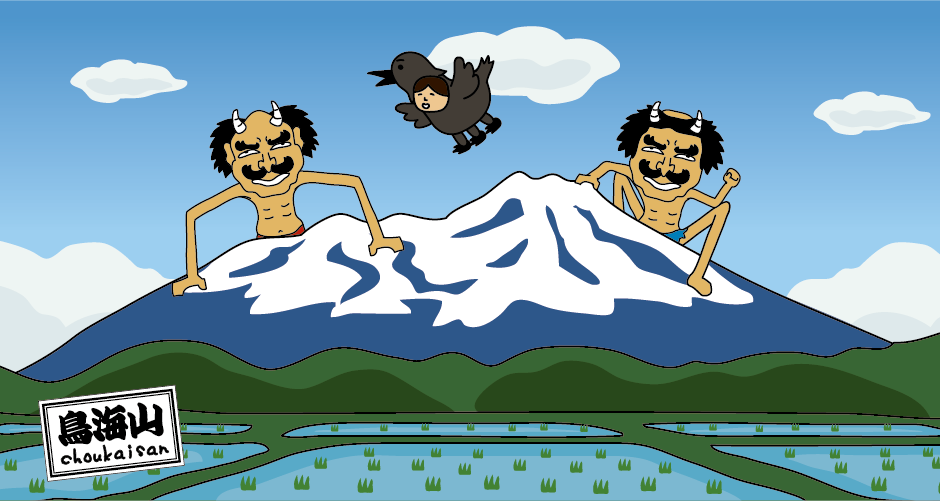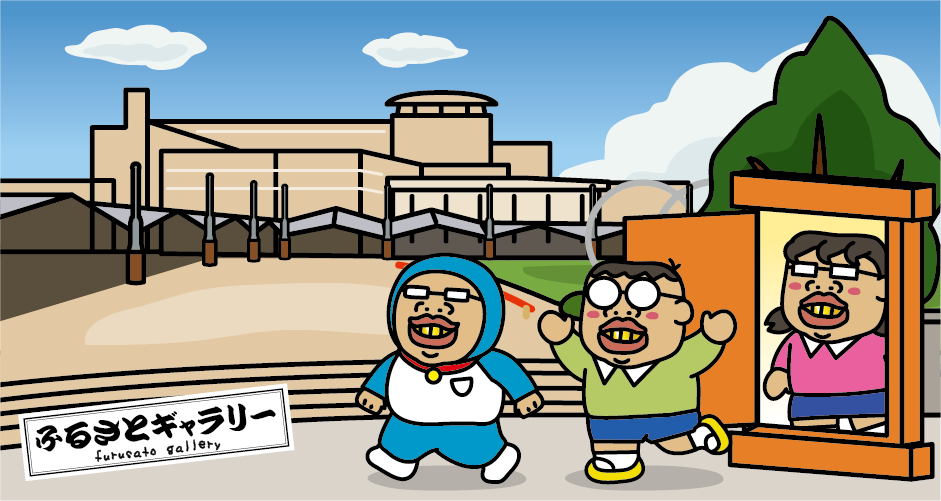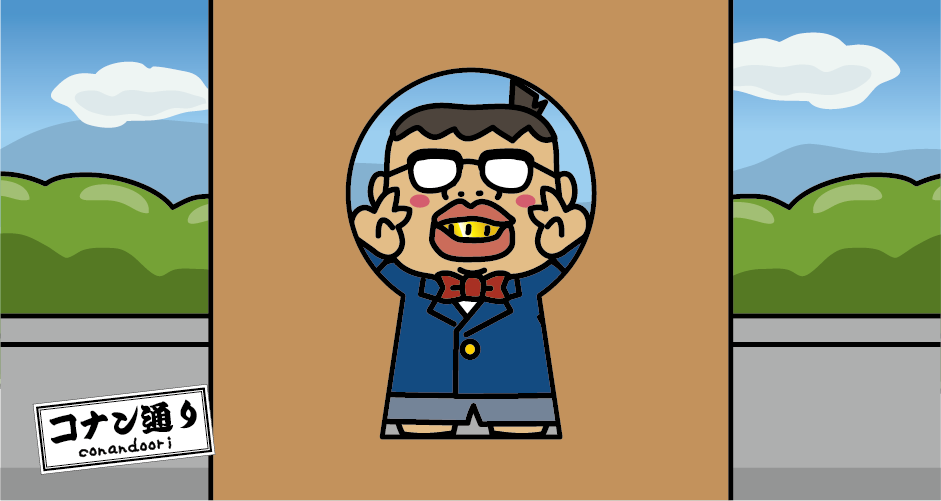The Legend of Tenaga Ashinaga in Mt. Chokai
When you visit the foot of Mt. Chokai, do not forget the story of “Tenaga Ashinaga,” a supernatural monster in Japanese folklore.
Mt. Chokai (elevation 2236m) is an independent mountain located on the border of Yamagata Prefecture and Akita Prefecture. The beautiful scenery of Mt. Chokai is selected as one of 100 famous mountains in Japan and 100 landscapes of Japan. Mt. Chokai is called “Dewa Fuji.” This is because the beautiful snowy appearance resembles Mt. Fuji. The foothills of this magnificent mountain extend to the sea. Mt. Chokai influences a lot on the people who live around the foot of the mountain. People believe that a god called “Omonoimino Kami” lives in Mt. Chokai. The mountain has been revered as a sacred mountain for a long time. Mt. Chokai is an active volcano, and people believed the eruption is a wrath of God.
The legend of “Tenaga Ashinaga” in Mt. Chokai
![[Mt. Chokai] Tenaga Ashinaga](https://iwemon-press.com/wp-content/uploads/2020/12/916c8a9c54ddfe40d670f494cb85ef66.png)
There is a legend of “Tenaga Ashinaga” in Mt. Chokai. Tenaga Ashinaga is a supernatural monster with long arms and legs. This monster used to catch and eat residents of the village in mountain foot, and travelers. They also sank ships sailed off the Sea of Japan. Villagers were at a loss and asked help from Omonoimino Kami of Mt. Chokai. The God of Mt. Chokai sent a three-legged crow. On the day Tenaga Ashinaga came down to the village, the crow sang “Uya” and informed villagers. And on the day they do not come down, the crow sang “Muya” and informed villagers.
![[Mt. Chokai] Legend of Tenaga Ashinaga](https://iwemon-press.com/wp-content/uploads/2020/12/1b80dc35bf5a5c1ac21fde98dcb74125.png)
Jikaku Daishi (Ennin), a priest of high virtue the foot of Mt. Chokai, placed a Buddhist statue at Mt. Misaki. He prayed to the statue for 100 days. Then a tremendous flash of light from the Buddha’s eye flew straight toward Mt. Chokai, where Tenaga and Ashinaga lived. The summit of the mountain was blown away together with Tenaga Ashinaga. A part of Mt. Chokai that blew off fell into the Sea of Japan and became an island. This island is said to be “Tobishima Island” in Sakata City. After that, all villagers were able to have peaceful lives. From this legend, a Sekisho, a barrier station at the foot of Mt. Chokai was called “Uyamuya no Seki.”
Chokai Blue Line
![[Mt. Chokai] Chokai Blue Line](https://iwemon-press.com/wp-content/uploads/2020/12/677356468b8a515aa0225ff508e200ce.png)
The Chokai Blue Line is a mountain road that connects the west side of Mt. Chokai from Yuza Town in Yamagata Prefecture to Nikaho City in Akita Prefecture. The way passes the fifth line (elevation 1100m) of Mt. Chokai. The total length is about 35km. As the name of the Chokai Blue Line, you can enjoy the blue waters of the Sea of Japan and the landscape of Shonai plain. And on a sunny day, this road will be a perfect driving course to enjoy the scenery of Sado Island in Niigata Prefecture and the Oga Peninsula in Akita Prefecture.
Climbing Mt. Chokai

The highest point of Mt. Chokai is Shinzan (2236m). There are many courses for a different level of mountain climbers, from beginner courses to well-experienced climber courses. If you choose a 4-hour hiking course for one day, you can also enjoy a day trip. I recommend staying overnight at the foot of Mt. Chokai. It will be great to take a day trip to the summit from the morning.
Misaki Park
![[Mt. Chokai] Misaki Park](https://iwemon-press.com/wp-content/uploads/2020/12/3409a11ec2d1a0b011a6c9b8bbda55e3.png)
Misaki Park is a beachfront park located on the border of Yamagata Prefecture and Akita Prefecture. The lava of Mt. Chokai flows into the sea and steep cliffs made by the erosion of rough seas. There is the old road of Mt. Misaki, which Basho Matsuo, a haiku poet known for “The Narrow Road to the Deep North,” went through on his way to Sakigata. Misaki Park is designated as a scenic spot in the country as “Landscape of Okunohosomichi (The Narrow Road to the Deep North).”
Access to Misaki Park
It takes about 4 hours from JR Tokyo Station to JR Akita Station by Tohoku Shinkansen bound for Akita (Akita Shinkansen). Transfer to the JR Uetsu Main Line at JR Akita Station and get to JR Kisakata Station in about 1 hour. Get off at JR Kisakata Station. It takes about 20 minutes from Kisakata-ekimae bus stop to Misaki Koen-mae bus stop by local bus (Kosagawa Line). Alternatively, it takes about 2 hours from JR Tokyo Station to JR Niigata Station by Joetsu Shinkansen. At JR Niigata Station, transfer to the JR Hakushin Line/Uetsu Main Line (limited express) and get to JR Sakata Station in about 2 hours. At JR Sakata Station, transfer to the JR Uetsu Main Line (local train) and get to JR Fukura Station in about 20 minutes. About 5 minutes by taxi from JR Fukura Station.










You need to login to comment on an article.